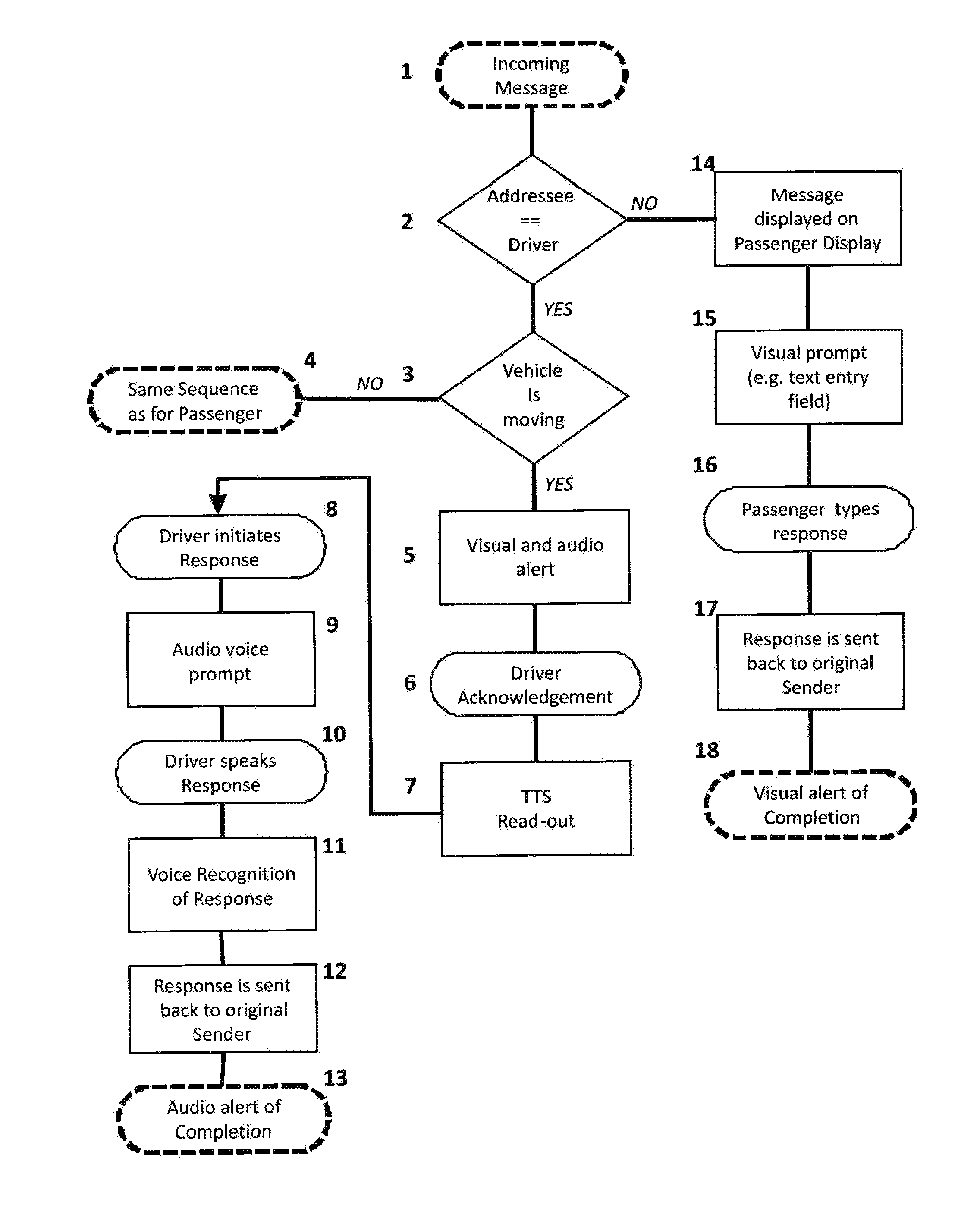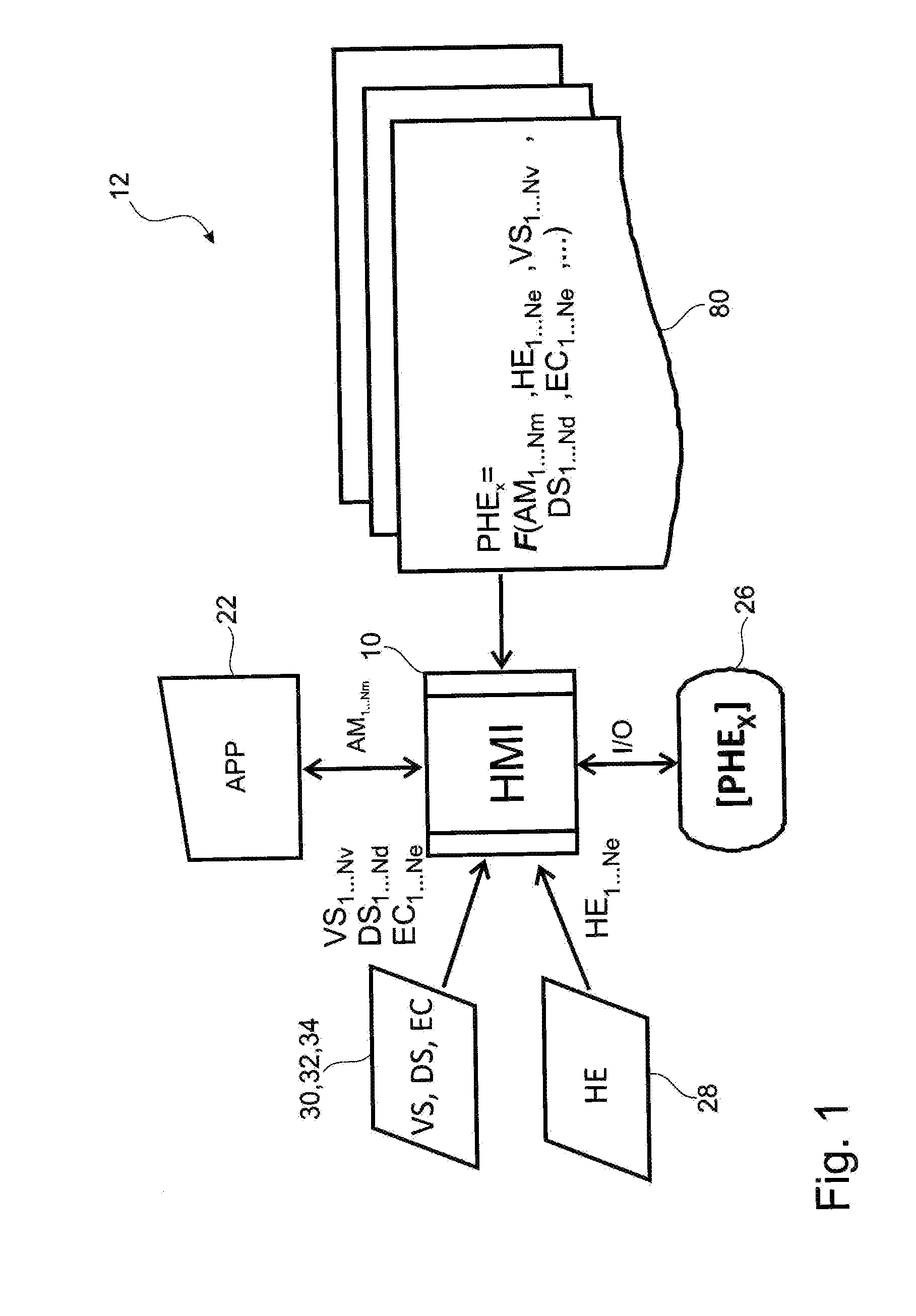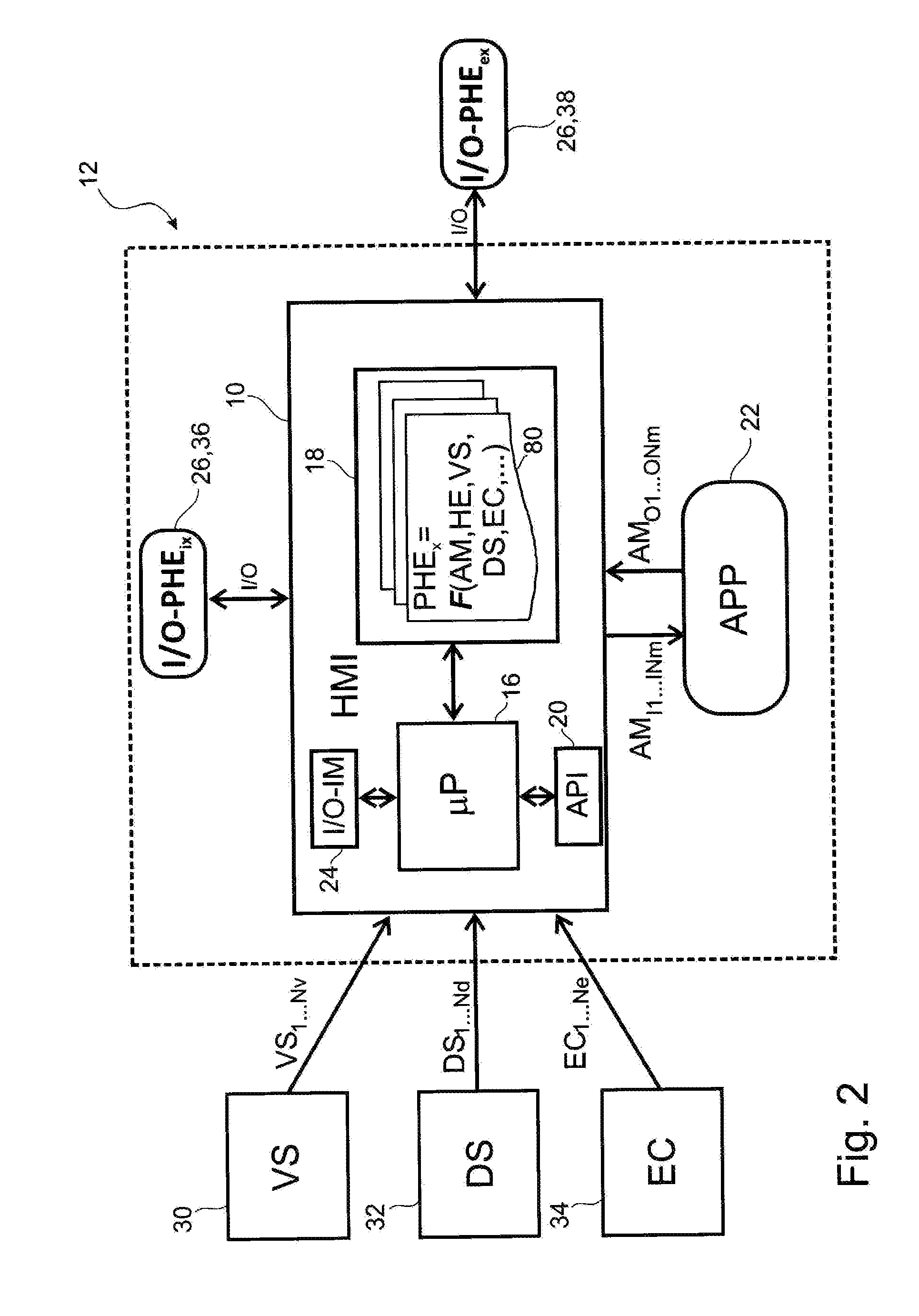[0013]According to an advantageous embodiment, said abstract I / O method AMx can comprise a set of input methods in the form of a graphical selection input, a textual input, an audio input, a
visual recognition input and / or a combination thereof; and a set of output methods can comprise an audio output, a visual output, a mechanical output and / or a combination thereof. Thus, an output of data by said application running inside a communication device can be made textually or graphically in the form of a visual output, in the form of a voice or a sound output or in the form of a mechanical output; and an input can be made either in the form of a mechanical input using a keyboard, switches, buttons, a
joystick, a slider, a
proximity sensor etc., an audio input in the form of
speech recognition; or an optical input in the form of
gesture recognition or the like. A plurality of different input and output methods provide adaptability of
data input and output according to various driving, vehicle and environmental situations and can advantageously be used for reducing the
distraction level of the
data input and the data output and for enhancing the
driving safety and comfort for the user by selecting an optimized I / O unit with the highest possible comfort and the lowest possible
distraction level.
[0016]To facilitate the integration of non-automotive applications into a vehicle environment, this embodiment introduces an abstraction function F that maps high-level HMI functions found on any
mobile computing device or computer into vehicle-specific interface functions (the HMI
abstraction layer). One key element of function F serves to provide a single set of application
programming interfaces (APIs) to the developer
community independently of different vehicle models and allows the specific implementation of the HMI, thus enabling rapid scaling of applications across vehicle types.
[0018]According to another advantageous embodiment and in line with the aforementioned embodiment, said HMI endpoint user HEx can be selected depending on a command of said communication application means APP and / or depending on a physical location of said physical I / O unit PHEx inside said vehicle, and / or said memory means comprising user
preference data and / or priority data of said abstract input or output method AMx considered by said function F for selecting a physical I / O unit PHEx or an HMI endpoint user HEx. Priority data can be used to output data to a passenger or a driver with higher intensity, for instance with increased volume of a
loudspeaker or increased brightness and contrast of a display. A high priority data output can overrule output restrictions and can be visually represented to a driver, via sound output and also via mechanical vibrations even in the case of a difficult driving situation. Data of high priority for instance can be an out-of-fuel warning, an emergency call or a vehicle failure warning.
[0025]outputting data of said abstract I / O method AMx via said selected physical I / O unit PHEx and / or receiving input data of said physical I / O unit PHEx and converting said input data into an abstract
input method AMix for inputting said abstract input method AMix into said communication application means APP. The inventive method can be executed by an embodiment of the aforementioned HMI unit and can be executed by a processor
system, comprising a controller means and a memory means. The method provides a conversion between an abstract I / O method of an application, such as an Email system, SMS, Internet application, navigation application,
bank transaction application or the like, and a selection and formation of an I / O request to a physical I / O unit such that an application is not required to be adapted to the I / O requirements of the vehicle. The conversion can consider a vehicle or a driving condition and also environmental conditions, such as
noise level, weather conditions, traffic or surrounding information. The method allows easy adaption of different communication devices for optimal integration into a vehicle's communication system. A car manufacturer or service can adapt a HMI behavior to a
vehicle type by configuring said method for all types of communication devices and applications.
[0026]According to an advantageous embodiment of said method, said input methods for inputting data can comprise a graphical selection input, a textual input, an audio input, a
visual recognition input and / or a combination thereof, and said output methods for outputting data can comprise an audio output, a visual output, a mechanical output and / or a combination thereof. Thus, data can be visually output by an optical
signal or on a display, such as a head-up display, can be superimposed on a display of an instrument board of the car, or can be output via sound, such as a spoken text or a
buzzer sound, or in the form of a mechanical output, such as a vibration of a part of a user's seat, arm rest,
steering wheel, gearshift-lever or
joystick. Data can be input by mechanical selection, e.g. finger-tipping on a head-up display, a keyboard input, a switch, a button or a slider, or can be input via
speech recognition or else optically via
gesture recognition. The method selects an optimal way of representing data or to request an input of a user depending on the vehicle and driving situation and environmental conditions such that the human
machine communication is non-distractive, clear, adequate and consistent. A driver may select an
input device independently or the method may prompt a specific input and / or output method, e.g. a touch screen dialog. Thus the method may
restrict input devices to one or specified devices, e.g. if a user has to choose from a
list, an
input device can be a touch screen and / or a dial wheel
input device. During normal operation the method can allow all kind of input devices for inputting data, e.g. selecting an item from a
list, but in a difficult driving condition an input device may be restricted to buttons and knobs integrated in the
steering wheel.
 Login to View More
Login to View More  Login to View More
Login to View More 


